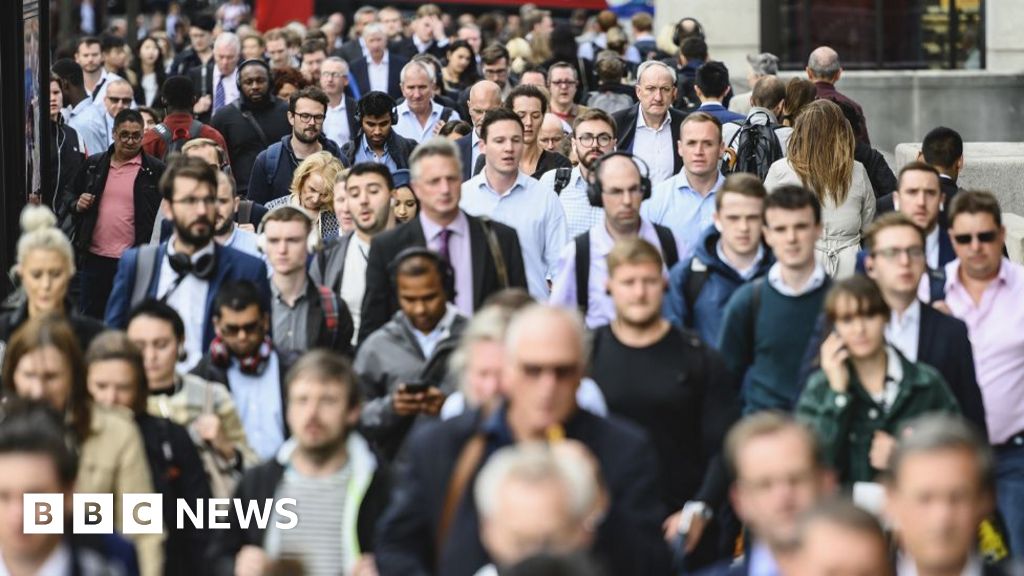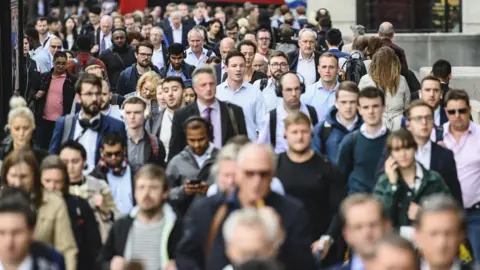
Government borrowing hits highest level since Covid in May
from Tom Espiner, Journalist, BBC News
 Getty Images
Getty ImagesGovernment borrowing in May marked the highest level since the Covid crisis, but was lower than the UK’s fiscal watchdog had forecast.
Borrowing reached £15 billion last month, which was £800 million higher than in May last year.
This means the public sector spent more than it took in in taxes and other income, forcing the government to borrow billions of pounds.
It is the third-highest figure for May since records began in 1993, surpassed only by the pandemic years.
However, borrowing was £600m less than the Office for Budget Responsibility (OBR) had expected.
With the general election fast approaching, whichever party wins will face similar challenges on taxes, spending and debt, economists have warned.
“Government borrowing remains stable, but a fiscal Pandora’s box awaits the next chancellor,” said Michal Stelmach, senior economist at KPMG UK.
“Interest rates are set to remain higher, debt is more difficult to reduce and spending pressures continue to mount.”
While there were some bright spots in May’s borrowing figures, according to Simon Wells, chief European economist at HSBC, he noted that government debt was at an “extraordinary” level – and the highest since the 1960s.
Government debt as a percentage of UK economic output – commonly known as gross domestic product – was at 99.8% last month.
“What has happened is that public sector debt has gone up, first through the global financial crisis and then again through Covid, so it’s at historically high levels,” Mr Wells told BBC Radio 4’s Today programme.
High levels of debt mean that public sector finances are vulnerable to higher interest rates, which makes repayments more costly. Mr Wells warned that the huge debt leaves less room to deal with any future crisis.
The Bank of England had raised interest rates in an attempt to reduce inflation in the UK, but a negative effect of this is that the government has to pay more interest on the debt.
Last month, interest payable on central government debt was £8bn, one of the highest on record.
Tax is a key battleground in the next general election, with the Conservatives, Labor and Lib Dems all ruling out increases in income tax, VAT and National Insurance rates.
Cuts to National Insurance have eaten into how much money the government takes in at a time when politicians are unwilling to commit to spending more on public services.
The Government received £900m less from National Insurance in May than in the same month last year.
But overall, tax revenue rose by £1bn as revenue from income, corporation and value added taxes rose.
Taxes, including income tax, have effectively risen following a government freeze on thresholds – the amount of money people earn before they start paying tax or before they start paying a higher rate.
Thresholds usually rise in line with inflation, but in 2021 the Conservative government froze most bands in response to Covid.
This has drawn more people to pay higher rates, in a phenomenon known as “fiscal drag”.
Retail sales recovery
Meanwhile in separate figures on Friday, retail sales rebounded in May after heavy rain affected April activity.
The amount people bought – volumes – rose 2.9% in May, after falling 1.8% in April after bad weather. The value also increased, by 3.2%.
Danni Hewson, head of financial analysis at AJ Bell, said “it’s no wonder we Brits are obsessed with the weather”.
“A bit of sunshine in May which helped lift temperatures and spirits translated into a hit to sales, particularly for clothing and furniture retailers,” she said.
Jacqui Baker, head of retail at auditors RSM UK, said consumers had been “loading up on clothes in anticipation of their summer holidays and rumors of a UK heatwave” in May.
But she added that “confidence to spend on big ticket items remains low”.
#Government #borrowing #hits #highest #level #Covid
Image Source : www.bbc.com
